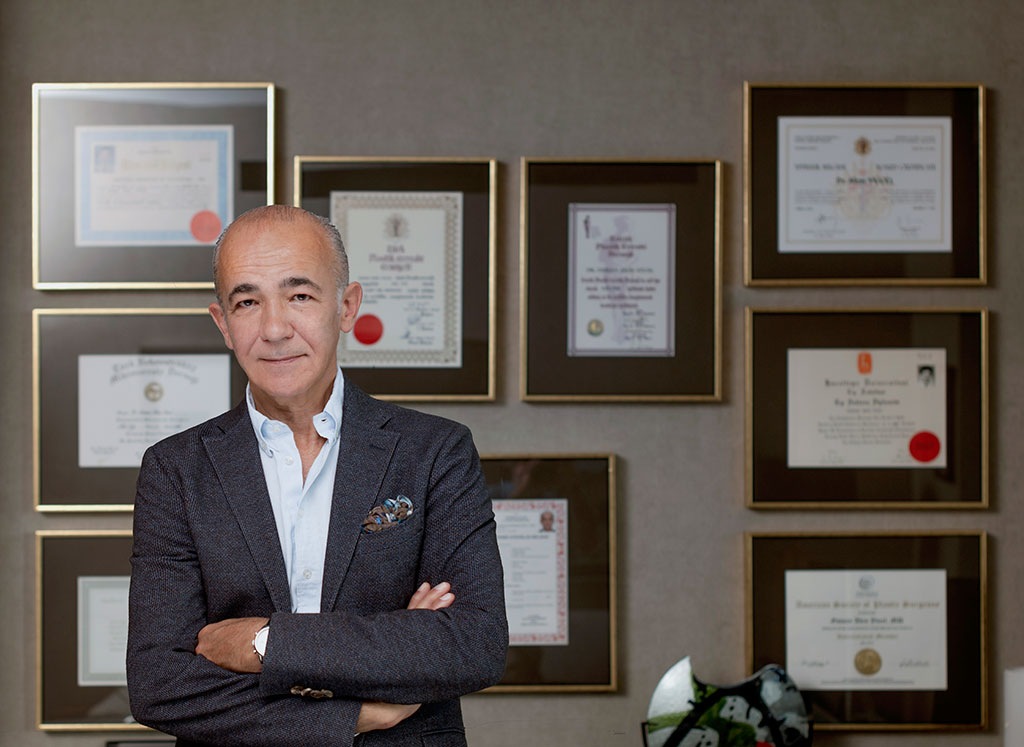This non-invasive method is used to lift sagging tissue in the midface, on the jowls and neck. Non-absorbable polymer strands are inserted under the skin and fixed just above the hair line. The strands carry tiny absorbable cones that act as anchors for the skin tissue. This technique is simpler and far less invasive than a surgical face lift. It is particularly suitable for middle-aged persons whose skin shows the first signs of sagging. Local anaesthesia is sufficient for this procedure, it is easy to apply and the recovery period is short. Once placed under the skin, the strands can be tightened further when the necessity arises again.
Frequently asked questions about silhouette lift:
Where in the face is silhouette lift applied?
Neck, jowls, midface, temples and eye brows.
Who is a good candidate for a silhouette lift?
It is a suitable method for middle-aged persons who experience the first signs of sagging skin, and at this stage do not consider a surgical intervention. The inserted strands only support the skin against the drag of gravity. In people with heavy skin, the technique is less effective and only of short duration.
What are the procedural steps of the treatment?
The procedure is performed in a clinical environment and with local anaesthesia or a sedative. On average, the procedure takes half an hour. One hour later the patient can go home. Depending on the application, the lifted area is supported with bandages for a few days.
What to do and what not to do before treatment?
Three weeks before an invasive / surgical treatment patient must stop smoking and taking aspirin. In the last week, patients must stop taking any anticoagulant (“blood-thinning”) medicine.
The following substances are also prohibited:
- pain killers such as Apranax, Voltaren and Vermidon (alternative brand names are Minoset and Novalgin)
- multivitamin tablets containing ginseng, ginkgo biloba and coenzyme Q,
- green tea, herbal products containing linseed, sour cherry stalks, tomato seeds
- all diet products.
Does the procedure require anaesthesia?
Local anaesthesia and sedatives are sufficient.
How long does the procedure take?
That depends on the individual application. 20 minutes are needed for every area. The entire process takes 40 minutes.
Is the procedure painful?
Patients mainly complain about a tense feeling in the face. This sensation can last up to one week.
What happens after the procedure?
One hour after the procedure patients can go home. In the first 2 days swelling and bruising may occur. The bandages are removed after 2 days and patients can return to work.
What are the immediate and long-term effects of the procedure?
In the first 2 days the face may look tense, and temporary asymmetries may occur. They disappear after a few days. The positive effect is not very long lasting and this procedure cannot replace a surgery. On the other hand, it is a relatively simple and quick method to achieve an improvement.
Are the effects of the procedure permanent?
No. The duration of the effect is dependent on the specific technique and the skin quality. In overweight people with heavy, oily skin the effect is small; in people with fine skin, the effect lasts considerably longer.

